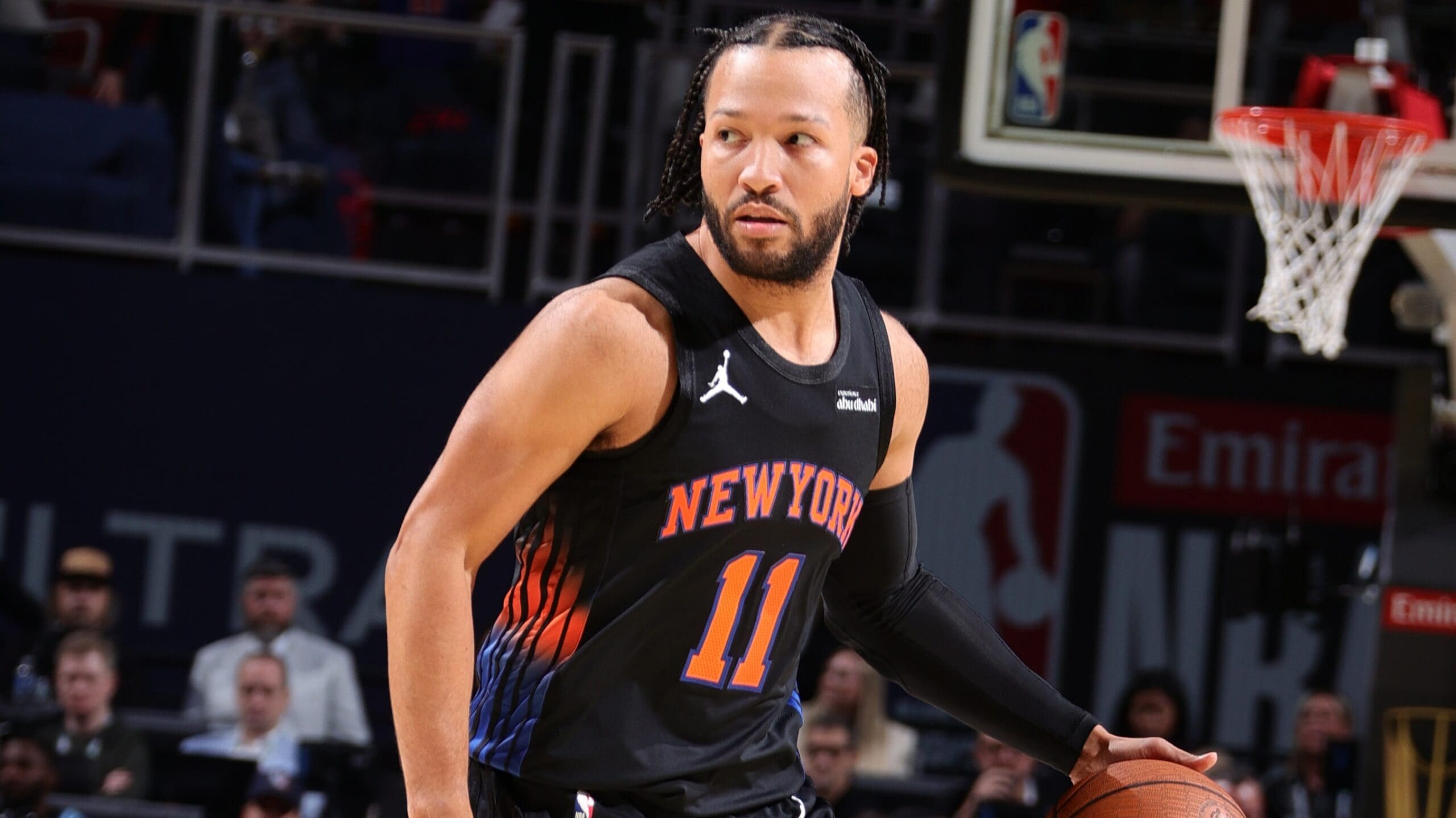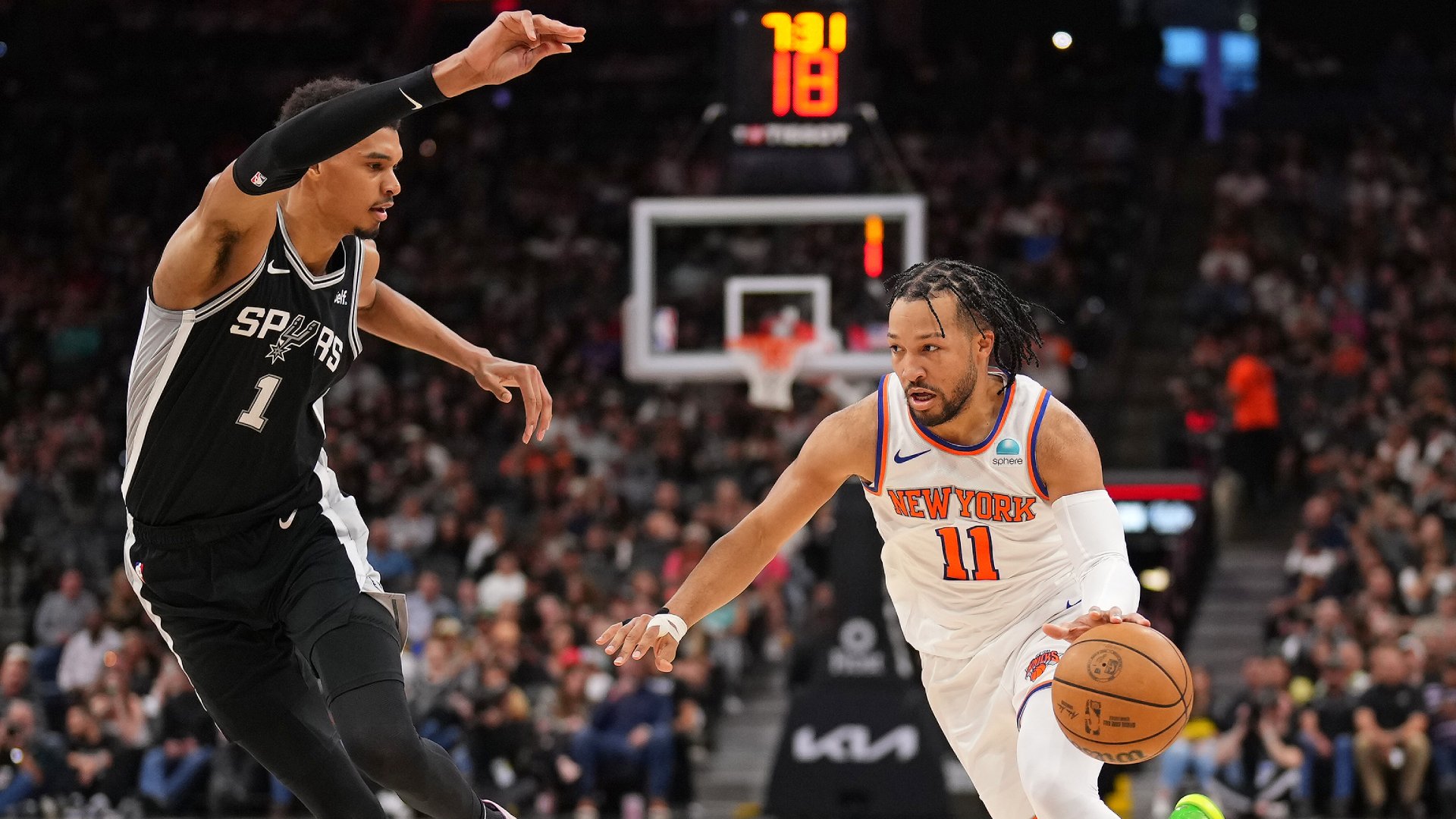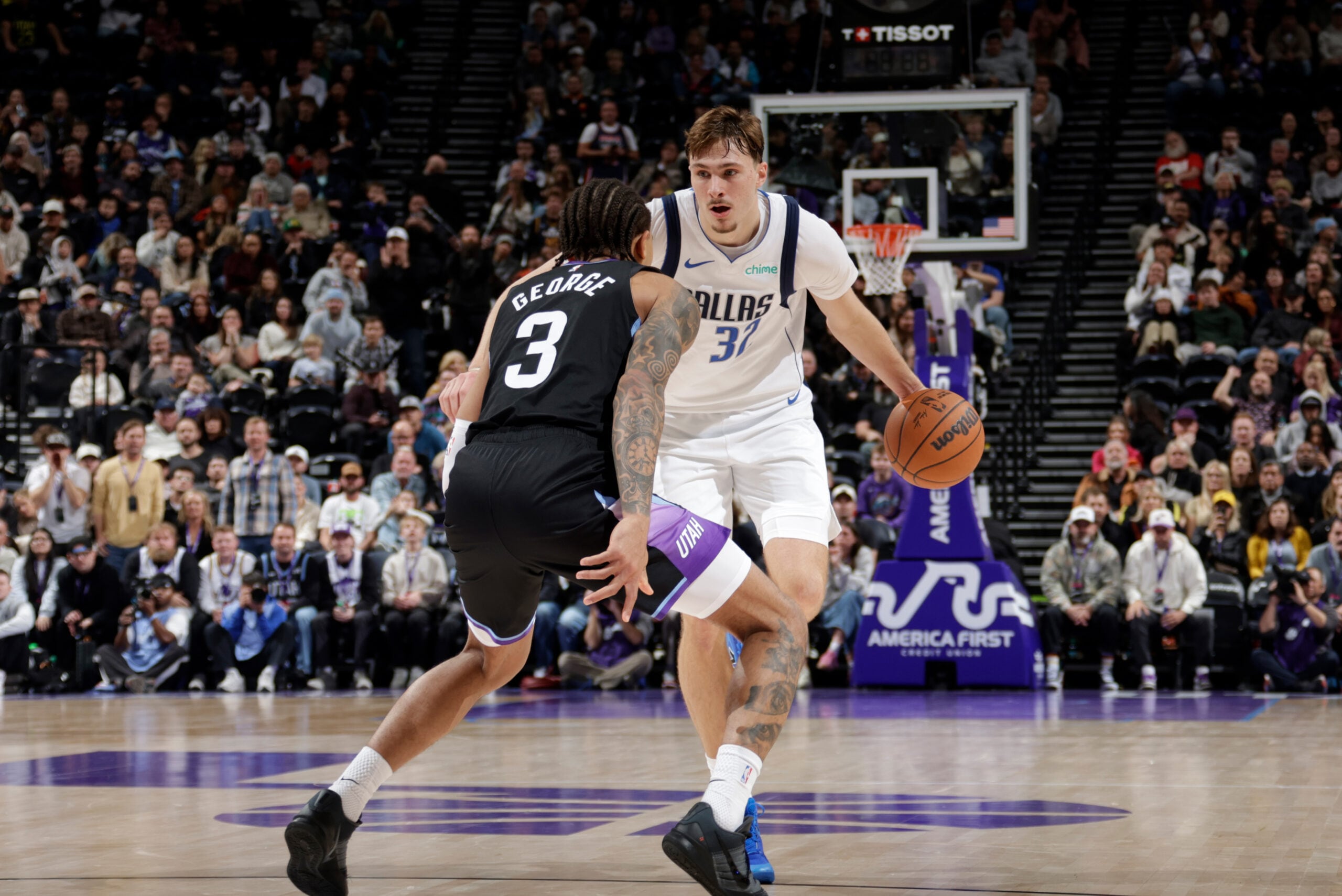
When we think of what makes Giannis Antetokounmpo great, we may initially envision his long strides in the open floor.
The reigning Kia MVP is relentless in his pursuit of transition dunks and layups. He’ll score around Anthony Davis in either direction – going left or going right. His Milwaukee Bucks rank third in fast break points (18.6 per game) and second in the percentage of their shots that have come in the first six seconds of the shot clock (19%), according to Second Spectrum tracking. Antetokounmpo himself leads all individuals with 6.1 fast break points per game.
But while Antetokounmpo is a seemingly unstoppable force when he’s going downhill, the Bucks aren’t that efficient on the break. According to Synergy play-type tracking, they rank 26th at 1.07 points per possession in transition. And according to Second Spectrum, their effective field goal percentage of 58.7% in the first six seconds of the shot clock ranks 21st.
Despite this, the Bucks still rank sixth in offensive efficiency, just a hair behind the fifth-ranked Miami Heat, and they lead the league in effective field goal percentage (55.3%), the most important number on offense.
The MVP leads the league with 17.5 points in the paint per game (the most for any player in the last 17 seasons), and the Bucks’ half-court offense has done a lot of the work in getting him to the basket. Only 25% of Antetokounmpo’s shots have come in the first six seconds of the shot clock.
Antetokounmpo’s combination of size and skills allows the Bucks to use him as both a guard and a big man. In transition, he’s the primary ball-handler. But in the half-court offense, he’s more of a screen-setter.
Let’s take a look at the various ways the Bucks utilize Antetokounmpo on offense.
With The Ball
Antetokounmpo isn’t nearly as ball-dominant as other MVP candidates. This season, he’s had possession for 4.6 minutes per game, a rate which ranks 39th in the league. According to Synergy, he’s averaged just 1.8 pick-and-roll ball-handler possessions per game, fourth on the team that ranks 28th in the league in ball-handler possessions.
But in his limited ball-handler opportunities, Antetokounmpo has been efficient. He’s scored 1.09 points per possession as a pick-and-roll ball-handler, the third best mark among 121 players with 100 or more ball-handler possessions. He hasn’t been nearly as efficient in isolations (0.87 points per possession), but ranks seventh in the league with 4.0 iso possessions per game. If he can get a half step on his defender, he’s going to attack.
Here are a few plays in which Antetokounmpo is able to get to the basket or to the line off the dribble:
Play 1. A simple high screen from Brook Lopez allows Antetokounmpo to attack a retreating Daniel Theis, who does a decent job of denying Antetokounmpo the space he needs to elevate. But the MVP is strong enough to finish through contact.
Number to know: According to Second Spectrum, Antetokounmpo has shot 69.4% at the rim with a defender there to contest. That’s the fourth best mark among 49 players (and the best mark among non-centers) with at least 200 contested attempts at the rim.
Play 2. Kyle Korver doesn’t actually set a screen for Antetokounmpo, but the threat of the screen is enough for Antetokounmpo to catch Semi Ojeleye leaning and get into the paint, execute his left-shoulder spin move, and draw a foul.
Number to know: Antetokounmpo has drawn fouls on 12.6% of his drives, the third highest rate among 107 players who’ve averaged at least five drives per game.
Play 3. After Theis and Gordon Hayward form a wall to stop Antetokounmpo in transition, he backs out and isolates against Hayward. He isn’t able to get all the way to the basket, but shows a soft touch on a one-foot fadeaway.
Number to know: Antetokounmpo has shot 39.4% on non-restricted-area shots in the paint. That’s a tick below the league average (39.9%). Given that he’s shot 72.9% in the restricted area, keeping him away from the basket is good math for the defense.
Play 4. On the Bucks’ favorite sideline out-of-bounds play (which we’ll see again later), Khris Middleton tries to post up Danny Green. When he can’t get good position, he sets a screen for Antetokounmpo, who posts up Green after the switch and quickly spins to the cup for an and-one finish over Avery Bradley.
Number to know: According to Second Spectrum, Antetokounmpo has shot 58.8% on post-ups, the best mark among 32 players with at least 75 post-up field goal attempts.
To The Post
Post-ups aren’t very popular these days, but the Bucks will run plays to get Antetokounmpo the ball on the block (he prefers the left block) several times a game.
Here are a few examples:
Play 1. On an after-timeout play that initially looks a lot like the Bucks’ favorite sideline out of bounds play, Antetokounmpo catches the ball outside, but then gives it back to Eric Bledsoe and runs off two back-screens to a post-up on the right block. Green switches the second of the two screens and can only foul Antetokounmpo in the post.
Number to know: Antetokounmpo leads the league with 8.2 fouls drawn per game.
Play 2. Another popular action in the Bucks’ playbook is a simple cross-screen, here set by Donte DiVincenzo, to get Antetokounmpo position on the left block. We looked at a few different options out of this play early last season, and it certainly helps when Antetokounmpo’s defender is only 6-foot-5.
Number to know: Eric Bledsoe’s 82 assists to Antetokounmpo are most from any of his teammates.
Play 3. A back-screen from Wesley Matthews allows Antetokounmpo to get post position against rookie P.J. Washington on the left block. From there, he goes to a left shoulder turnaround in the paint.
Number to know: The Bucks are the only team that hasn’t had a rookie play for them this season.
Play 4. When Deonte Burton switches a George Hill-Antetokounmpo pick-and-roll, the MVP takes the 6-foot-3 Luguentz Dort into the post, where he scores over the non-existent rim protection of Mike Muscala.
Number to know: Antetokounmpo is one of four players – Anthony Davis, Derrick Favors and Rudy Gobert are the others – who have shot 70% or better on at least 200 restricted-area attempts in each of the last three seasons.
Screen And Roll
Antetokounmpo averages less than two roll-man possessions per game, according to Synergy. But he’s a willing and active screener, and using him as a roll man can force a defense into some tough situations.
Here are a few plays with Antetokounmpo rolling to the rim:
Play 1. On the Bucks’ first possession against the Thunder in late February, Antetokounmpo’s third screen for Bledsoe turns into a clean roll down the middle of the paint with Lopez’s spacing keeping Steven Adams occupied.
Number to know: The Bucks have outscored their opponents by 18.9 points per 100 possessions with Bledsoe and Antetokounmpo both on the floor. That’s the highest on-court NetRtg mark among 308 two-man combinations that have played at least 750 minutes together.
Play 2. In transition, Antetokounmpo gives the ball to Middleton and quickly sets a ball-screen to get Middleton toward the middle of the floor. With Lopez again spacing, the only help defender to meet Antetokounmpo’s roll to the rim is the 6-foot Kemba Walker.
Number to know: Antetokounmpo has been assisted on 45.4% of his buckets this season. That’s down from 48.7% last season, but isn’t the lowest rate of his career.
Play 3. Antetokounmpo first sets a ball-screen for Bledsoe, but then pops out to the top of the floor, with Korver sprinting out of the left corner for a dribble-handoff. Middleton clears out so the left side of the floor is empty for Antetokounmpo’s roll to the rim. Again, the only defender in position to help is a guard.
Number to know: Antetokounmpo leads the league (for the second straight season) with 434 total buckets in the restricted area. Of those buckets, 207 (48%) have been assisted.
Play 4. Antetokounmpo doesn’t actually set a screen and doesn’t get the ball as he slips to the rim, but the slip draws help from Nicolas Batum, leaving Middleton open for a corner 3.
Number to know: Middleton has shot 46.5% on catch-and-shoot 3-pointers, the fifth best mark among 190 players who have attempted at least 100.
On The Move
Using Antetokounmpo as a roll man isn’t the only way to get him the ball on the move. Here are a few other options:
Play 1. On an after-timeout play, Antetokounmpo gives up the ball and gets a back-screen from Korver, discarding poor Jerome Robinson with a swim move that J.J. Watt would be proud of.
Number to know: According to Synergy, the Bucks rank third in after-timeout efficiency at 1.00 points per possession.
Play 2. Here’s that sideline out of bounds play again, where the ball is entered to the strong-side elbow and the inbounder (Antetokounmpo) gets a back-screen from another perimeter player (Korver) coming up from the strong side block. Shooters make the best screeners, because their defenders (Javonte Green in this case) don’t want to leave them. On this play, Enes Kanter sees the play and is there for help, but loses a wrestling match for the ball and fouls the MVP.
Number to know: Antetokounmpo is the only player who has played at least 500 minutes and accounted for more than half the fouls his team has drawn while he’s been on the floor.
Play 3. After a timeout, Antetokounmpo sets the baseline cross-screen for Lopez and then gets a pin-down screen from Bledsoe. After LeBron James hedges the first screen, he gets caught in the second one, allowing Antetokounmpo to catch the ball with plenty of space to operate. James wisely closes out in control and Antetokounmpo settles for a mid-range jumper.
Number to know: Antetokounmpo has shot 65.7% in the paint and has an effective field goal percentage of 43.7% on shots from outside the paint. That’s the sixth biggest differential among 222 players with at least 100 field goal attempts both in and outside the paint.
Play 4. The final play could be put in the roll-man category, but Antetokounmpo clears out after initially rolling to the rim. Bledsoe then “puts the speed on” to collapse the defense, and the ball eventually finds Antetokounmpo for another one of those 434 restricted area buckets.
Number to know: With the departure of Malcolm Brogdon, the Bucks have seen the biggest drop in drives per game, from 48.5 (seventh) last season to 38.8 (28th) this season.
Next Steps
Having different ways to get Antetokounmpo the ball near the basket, especially in a playoff series when the opponent knows what’s coming, will continue to be critical for the Bucks. So will the ability of his teammates to make defenses pay for using multiple defenders to stop the MVP.
The Bucks rank just 21st in catch-and-shoot 3-point percentage (36.5%). Brook Lopez is a Defensive Player of the Year candidate and will space the floor offensively, but defenses will allow him to shoot. The 29.7% he’s shot on catch-and-shoot 3s is the third worst mark among 67 players who’ve attempted at least 200.
Korver is one of the best shooters in NBA history and Antetokounmpo’s partner in a lot of effective actions offensively, but is a liability on the other end of the floor. In the Bucks’ loss to the Lakers in early March, Rajon Rondo blew by Korver for two layups, and the 39 year old would surely be a target of the opposing offense in a playoff series. DiVincenzo has shot adequately (36.3%) on catch-and-shoot 3s, but the Bucks’ other back-up wing – Pat Connaughton – has not (31.5%).
Bledsoe shot 9-for-35 (26%) on catch-and-shoot 3s in last year’s playoffs. George Hill has been the best shooter in the league this year, but doesn’t provide the defense nor the driving ability (needed even more with the absence of Brogdon) that Bledsoe does.
The Bucks’ No. 1-ranked defense, featuring elite rim protection, will win them a lot of games. But there will be times when the opponent is knocking down the 3s that the Bucks are willing to give up, and the spotlight will turn to the other end of the floor, Antetokounmpo’s ability to get to the rim, and his teammates’ ability to provide help.
* * *
John Schuhmann is a senior stats analyst for NBA.com. You can e-mail him here, find his archive here and follow him on Twitter.
The views on this page do not necessarily reflect the views of the NBA, its clubs or Turner Broadcasting.










